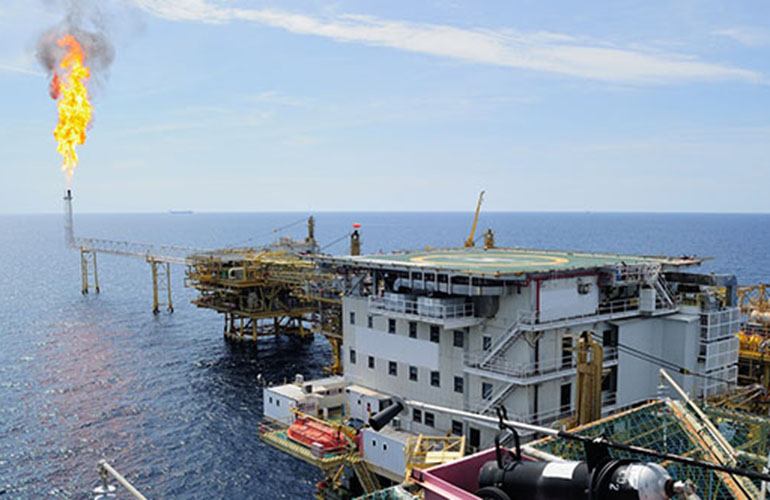
For physical product data and material safety data sheets, the Flutec® Tracers are divided into lower boiling tracers (with six, seven or eight carbons; boiling up to 105°C) and higher boiling tracers (with nine, ten or eleven carbons; boiling over 115°C):
Flutec Tracers comparison table
Flutec® TG-Tracers share a unique set of properties which make them ideal candidates for tracing and tagging applications:
There are 16 Flutec® Tracers in the range with boiling points between 45°C and 155°C, which allows multi-tracer experiments to be performed. They can be deployed, sampled and analysed with the same instrumentation simultaneously.
Flutec® tracers are used to tag flowing media such as atmospheric gases or liquids in oil fields. Some of their uses are listed below
Flutec® Tracers are a crucial tool in maximising productivity through accurate mapping of flow paths, volumes and the geological structures of oil and gas reservoirs. They are injected into the flow with an injection-gas and will trace the path of the injection-gas to a production well in the subsurface environment, providing definitive information regarding injector/producer communication, partitioning characteristics and cycle times.
Traditional gas tracer techniques have involved the use of various combustible radionuclides injected at high pressure , which have obvious safety and environment issues. Unlike radionuclides Flutec® TG-Tracers have excellent toxicological profiles and are not ozone depleting. They also offer similar detection limits to radioisotope tracers, however unlike radiotracers Flutec® Tracers do not occur naturally within the reservoir eliminating the chance of receiving spurious information by masking, and offer the advantage of a wider portfolio enabling multi-well tracer operations to be performed. They have transport characteristics comparable to methane and ethane, but with excellent chemical and thermal stability.
Emissions from modern industrial plants do not respect national borders and can travel many hundred of miles and mix with other sources of pollution. Flutec® Tracers enable pockets of air to be identified and followed from source of pollution to dispersal or deposition.
Flutec® Tracers are non-toxic and do not constitute a pollution nuisance themselves, they are thermally stable and have the ability to survive high temperatures within most industrial stacks. When in the air they behave as an inert material for the duration of the tracing experiment. Flutec® Tracers have an extremely low background reading and are detectable at parts per quadrillion levels.
Flutec® Tracers have been used in notable atmospheric studies such as the 'Across North America Tracer Experiment (ANATEX)'.
Industrial accidents of major dimensions, releasing harmful radioactive or chemical material to the atmosphere, can have consequences extending to hundreds and even thousands of miles impacting on human health and international trade. Flutec® Tracers are a tool to enable countries to develop contingency plans as part of their emergency management programs. Flutec® Tracers were chosen for the European Tracer Experiment (ETEX) in 1994 - a European-wide simulation of a release from a nuclear facility in France, ANATEX in 1991 and more recenlty the Urban 2000 project in Salt Lake City
Flutec® Tracers also find application in many other consumer and industrial applications that require tracability of an item. One such application is building ventilation studies - understanding and measuring airflow for energy conversation and indoor air quality assessments.
Throughout the world there are thousands of miles of High Pressure Fluid Filled (HPFF) underground electricity cables. Each cable, although designed for heavy duty work, has the potential to rupture, leaking environmentally damaging dielectric fluid. Flutec® Tracers enable leaks to be pin-pointed accurately and quickly. The dielectric fluid is tagged with a small concentration of Flutec® Tracer which is transported along with the leaking dielectric fluid into the surrounding subsurface environment. The dissolved Flutec® Tracer volatilises, permeates through the ground and is emitted into the air through any cracks for instance in city streets. With the use of samplers and real-time monitors specialist tracer organisations can detect the leak to within 2 feet on a several mile span of buried cable.
The same technology can be used to detect leaks from storage tanks whether they are located above or below ground. The test is conducted by injecting small amounts of a Flutec® Tracer into product streams and monitoring the surrounding soil for Flutec® Tracers.
In a similar way Flutec® Tracers can be used to detect leaks from other systems.